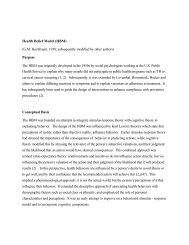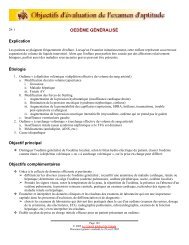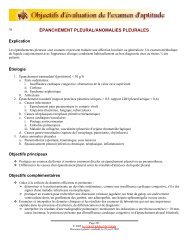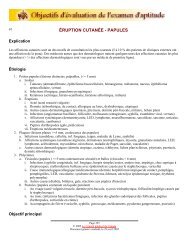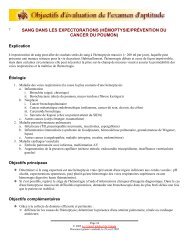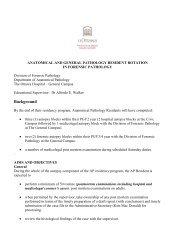Galactorrhea Discharge.pdf
Galactorrhea Discharge.pdf
Galactorrhea Discharge.pdf
You also want an ePaper? Increase the reach of your titles
YUMPU automatically turns print PDFs into web optimized ePapers that Google loves.
10-2 GALACTORRHEA/DISCHARGE<br />
Rationale<br />
Although noticeable breast secretions are normal in >50 % of reproductive age women, spontaneous persistent galactorrhea<br />
may reflect underlying disease and requires investigation.<br />
Causal Conditions<br />
1. True galactorrhea (fat droplets present)<br />
a. Idiopathic (most common cause - 1/3)<br />
b. Hyperprolactinemia<br />
i. Physiologic (pregnancy, breast stimulation, stress)<br />
ii. Autonomous prolactin production<br />
A. Pituitary tumors (micro or macro-adenoma)<br />
B. Ectopic production of prolactin (bronchogenic or renal cell cancer)<br />
iii. Enhanced prolactin-release/Decreased clearance<br />
A. Hypothyroidism, chronic renal failure<br />
B. Steroid hormones (oral contraceptive pills)<br />
C. Sucking reflex simulators (post-thoracotomy, burns, herpes zoster)<br />
iv. Failure to inhibit release of prolactin (drugs/disease inhibiting dopamine)<br />
A. Pituitary stalk section or compression by mass lesion<br />
B. Drugs (phenothiazines, methyldopa, opiates)<br />
2. Abnormal breast discharge (usually Uni ductal, bloody or serosanguineous) - breast neoplasm, benign or malignant<br />
Key Objective(s)<br />
✥<br />
✥<br />
Differentiate between galactorrhea and breast discharge.<br />
Differentiate physiological from pathological galactorrhea.<br />
Objectives<br />
✥<br />
✥<br />
✥<br />
Through efficient, focused, data gathering:<br />
➢ Determine whether discharge is expressed or spontaneous, unilateral or bilateral, color of discharge, medication<br />
use, which patients have menstrual irregularities, infertility, headaches or visual changes, symptoms of<br />
hypothyroidism.<br />
➢ Examine breasts for skin lesions, unilateral/Uni ductal discharge, breast mass.<br />
List and interpret critical clinical and laboratory findings which are key in the processes of exclusion, differentiation,<br />
and diagnosis:<br />
➢ If nipple discharge is bloody, order cytology.<br />
➢ Select and interpret laboratory and diagnostic imaging in a patient with galactorrhea.<br />
Conduct an effective plan of management for a patient with breast discharge:<br />
➢ Determine which patients likely have a breast neoplasm.<br />
➢ Outline the role of dopamine agonists (e.g., cabergoline, bromocriptine) in the management of patients with<br />
Page 52<br />
© 2005 The Medical Council of Canada<br />
Generated Friday, 29 April 2005
GALACTORRHEA/DISCHARGE<br />
hyperprolactinemia and galactorrhea.<br />
➢ Counsel/educate patients with galactorrhea about how to minimize it.<br />
➢ Select patients in need of specialized care.<br />
Page 53<br />
© 2005 The Medical Council of Canada<br />
Generated Friday, 29 April 2005




